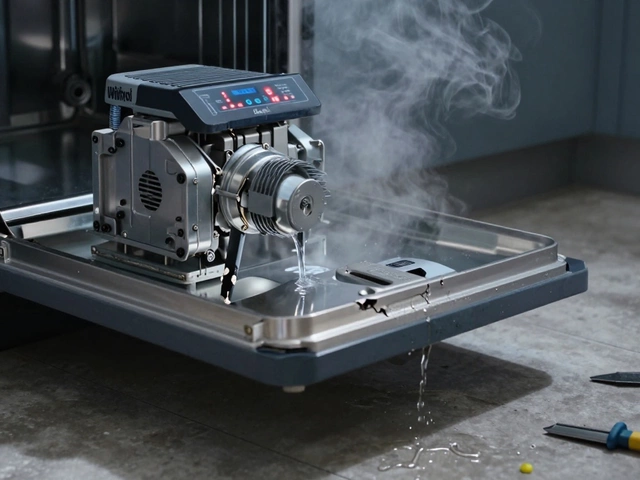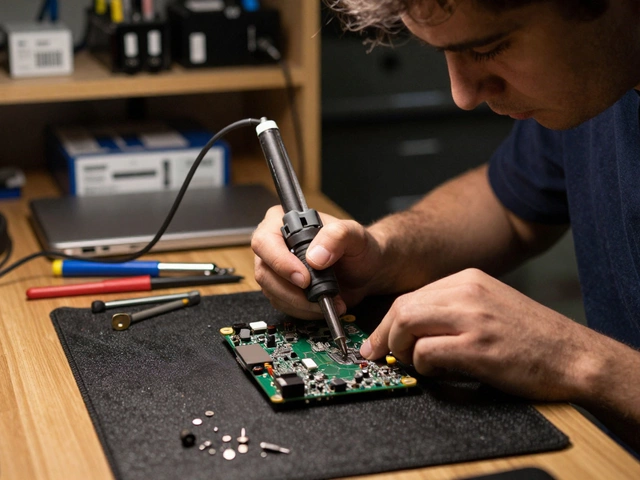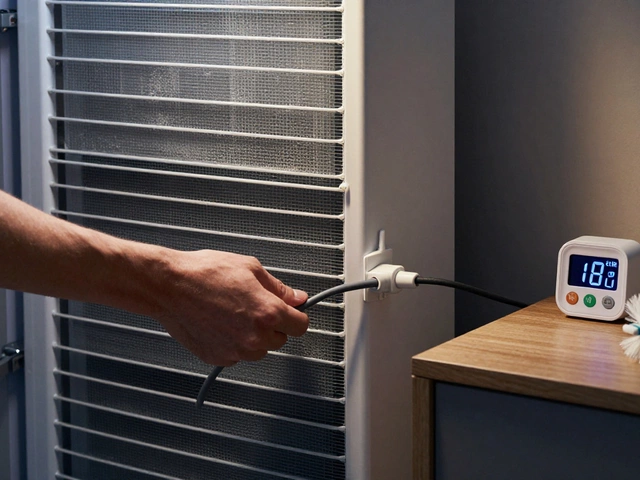Laptop Repair Cost Calculator
Is Your Laptop Worth Repairing?
Recommendation
Seven years is a long time in the life of a laptop. Back then, Windows 10 was new, SSDs were still a luxury, and 8GB of RAM was considered plenty. Today, that same machine might struggle to open five browser tabs without freezing. So when it starts slowing down, making weird noises, or refusing to charge properly - you ask yourself: is it worth fixing a 7-year-old laptop? The answer isn’t yes or no. It’s a calculation.
What’s Actually Broken?
Not all problems are created equal. A cracked screen or a dead battery? Those are easy fixes. A failing motherboard or a corrupted BIOS? That’s a different story. Start by identifying what’s wrong.- Battery won’t hold charge: Replacing the battery costs $40-$80 and takes 30 minutes. Your laptop might run like new again.
- Slow boot and apps: If it’s still got an HDD, swapping it for a $30 SSD can make it feel 3x faster. This upgrade alone fixes 70% of slow-laptop complaints.
- Overheating and fan noise: Dust buildup is the #1 cause. Cleaning it out and reapplying thermal paste costs under $20 and can add years to its life.
- Keyboard or trackpad stops working: Replacements are cheap ($15-$40) if the laptop isn’t a weird proprietary model.
- Screen flickering or dead pixels: Replacing the display can cost $100-$200. At this point, you’re getting close to the price of a new budget laptop.
- Won’t turn on at all: Could be the power jack, motherboard, or CPU. Repairing this often costs $150+, and if the parts are discontinued, you’re gambling.
Most repairs under $100 are worth it. Anything over that, you need to compare it to what you’d get for the same money in a new machine.
What Can It Still Do?
A 7-year-old laptop doesn’t need to run the latest games or edit 4K video to be useful. It just needs to handle your daily tasks.Think about what you actually use it for:
- Browsing the web? Yes.
- Checking email and using Google Docs? Absolutely.
- Video calls on Zoom or Teams? Still fine, if the camera and mic work.
- Streaming Netflix or YouTube? Easy, even on HD.
- Running Photoshop or Excel? Maybe, if you’re not doing heavy work.
- Playing modern games? No. Don’t even try.
Most people don’t need cutting-edge hardware. If your laptop still boots in under a minute, opens apps without lag, and connects to Wi-Fi reliably - it’s still doing its job. A simple SSD and RAM upgrade ($70 total) can bring it back to life for another 2-3 years of solid use.
What’s the Cost of a New One?
A new entry-level laptop in 2025 costs $350-$500. That’s a lot more than a $60 SSD or a $50 battery. But here’s the real question: what are you getting?For $450, you get:
- 12th or 13th Gen Intel or Ryzen 3 processor (2-3x faster than 7-year-old CPUs)
- 16GB RAM as standard
- 512GB SSD
- Full HD screen with better color and brightness
- Wi-Fi 6 and Bluetooth 5.3
- At least 8 hours of battery life
- Modern ports: USB-C, HDMI, maybe even Thunderbolt
- 2-3 years of software support
Compare that to your 7-year-old machine: it’s like trading a bicycle for an electric scooter. The difference isn’t just incremental - it’s life-changing for everyday use.

Is the Repair Worth the Risk?
Fixing an old laptop isn’t just about money. It’s about time, stress, and reliability.Here’s what you risk:
- Time: Waiting for parts, taking it to a shop, or spending your weekend disassembling it.
- Future failures: If one component is failing, others are close behind. Batteries age. Capacitors dry out. Solder joints crack.
- Security: Windows 7 and Windows 8.1 are no longer supported. Even Windows 10 will stop getting security updates in 2025. That means your laptop could become a target for malware.
- Warranty: Repairs on old laptops rarely come with any guarantee. If it breaks again in a month, you’re back to square one.
That $120 repair might save you $350 now - but if it dies again in 6 months, you’ve spent $120 for nothing.
When to Walk Away
There are clear signs it’s time to replace, not repair:- The repair costs more than 50% of a new budget laptop.
- The laptop is already running Windows 10 without updates - no security patches.
- It has physical damage: cracked case, bent hinge, water damage.
- You need to use modern software: Zoom, Microsoft 365, Adobe apps, or cloud-based tools that demand newer hardware.
- You’re tired of it freezing, crashing, or not charging.
If any of these apply, spend the money on a new one. Don’t throw good money after bad.
When to Fix It
And here’s when fixing makes perfect sense:- You only use it for basic tasks: email, browsing, light documents.
- The issue is a battery, SSD, or RAM upgrade - under $100 total.
- You’re on a tight budget and need temporary relief.
- You like the keyboard, trackpad, or screen and don’t want to relearn a new layout.
- You’re not in a hurry and can wait for parts to ship.
Many people in Vancouver - especially students, retirees, and remote workers - keep their 7-year-old laptops alive with simple upgrades. It’s not about being cheap. It’s about being practical.

What to Do Next
Here’s a simple decision tree:- Identify the problem.
- Get a quote for the repair. If it’s under $100, move to step 3.
- Check if your laptop still gets Windows updates. If not, skip to step 5.
- Compare the repair cost to a $350-$450 new laptop. If the repair is less than half the price, fix it.
- If the repair is expensive, or your OS is unsupported, buy new.
For most people, the sweet spot is: fix if it’s a $50-$80 fix, replace if it’s anything more.
What About Recycling?
If you decide to replace it, don’t toss it. Vancouver has free e-waste drop-off points at City Hall, Recycle BC depots, and Best Buy. Your old laptop can be responsibly recycled - and you might even get $20-$50 for it if it still turns on.Some charities like Reboot Canada take old laptops, refurbish them, and give them to low-income families. That’s a better use than landfill.
Final Thought
Fixing a 7-year-old laptop isn’t about nostalgia. It’s about value. If you can make it work reliably for another year or two with a small investment, go for it. But don’t pretend it’s a long-term solution. Technology moves fast. What works today won’t work tomorrow - especially if you’re running unsupported software.There’s no shame in replacing an old device. But there’s also no shame in stretching its life - if you do it smartly.





